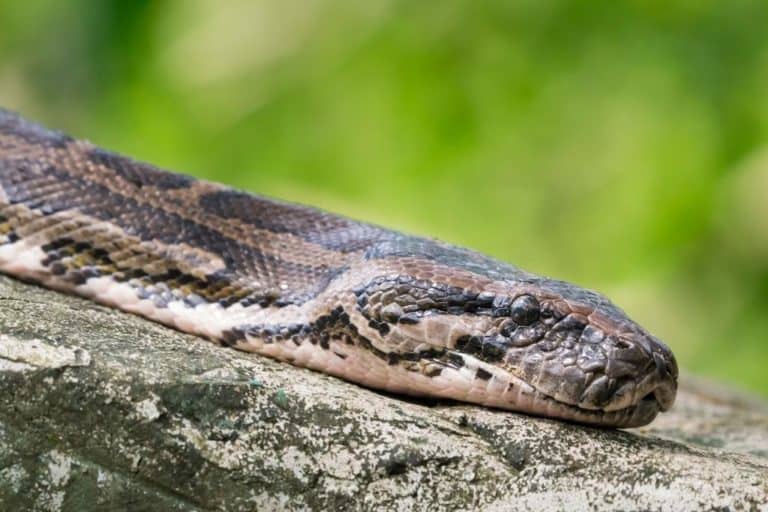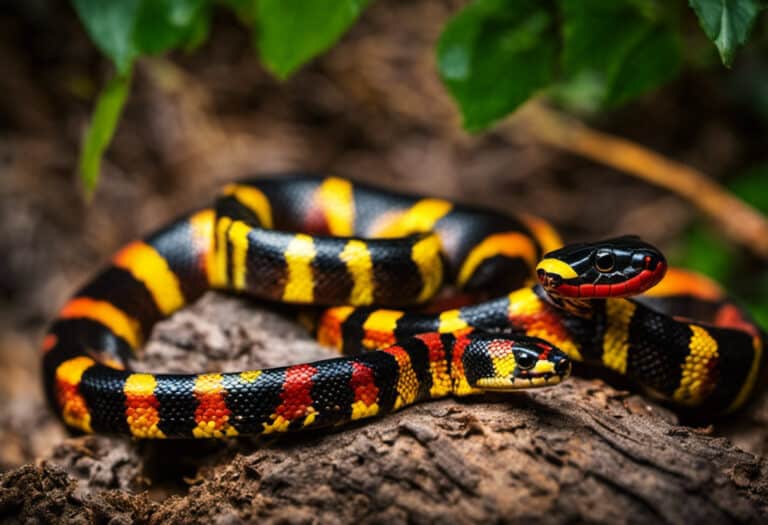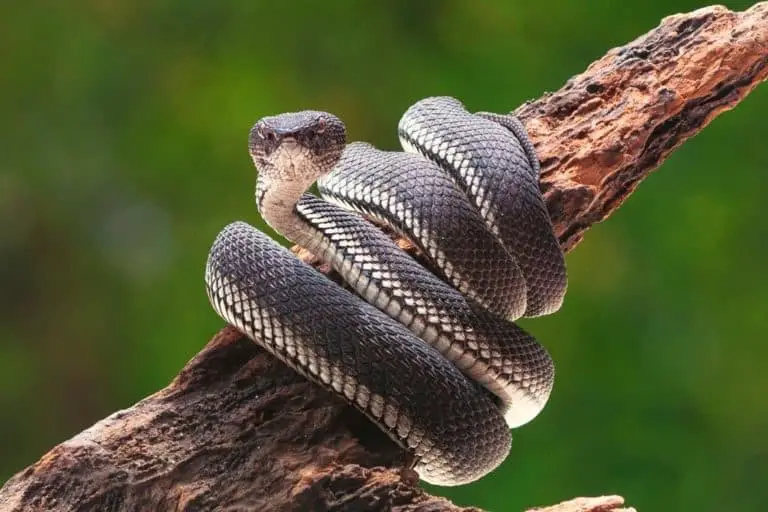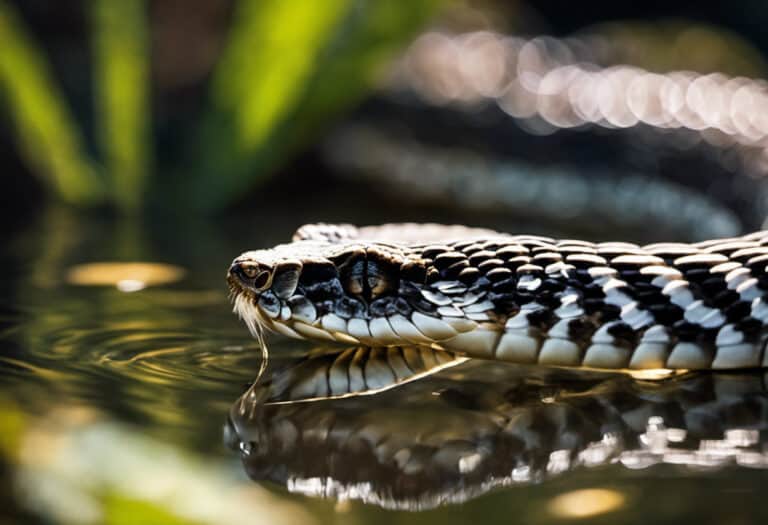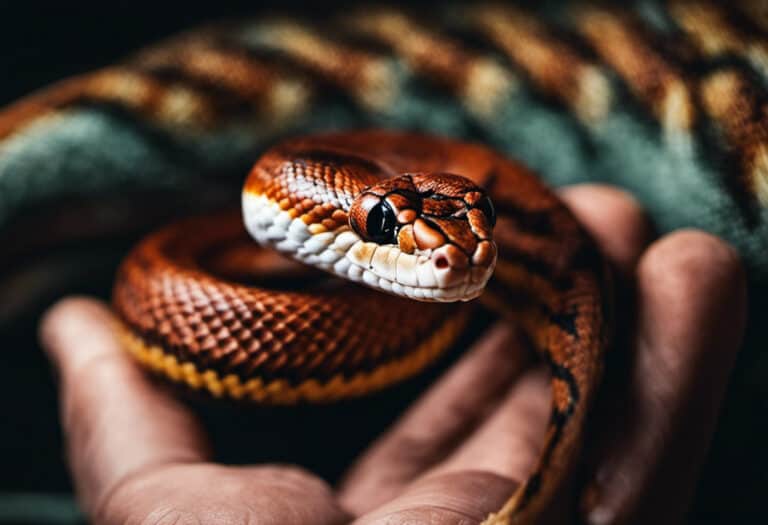Do All Snakes Have Forked Tongues?
Do you ever wonder why snakes have forked tongues? Have you questioned if all snakes possess this unique characteristic?
In this article, we’ll explore the importance and function of the forked tongue for snakes.
Snakes heavily rely on their sense of smell, and their forked tongues play a crucial role in collecting scents. Unlike mammals and lizards, snakes don’t have taste buds on their tongues. Instead, their tongues act as samplers, collecting scent samples in the saliva.
Keep reading to uncover why snakes have forked tongues and how it aids them in their daily lives.
Key Takeaways
- The forked tongue is an important sensory organ for snakes, helping them gather information about their surroundings and detect chemicals in the environment.
- Snakes use their forked tongues to follow scent trails, locate prey, avoid danger, and find a mate.
- The forked shape of the tongue enhances the snake’s ability to sense direction and collect scent samples from two different spots simultaneously.
- Snakes have a highly developed sensory system for detecting scents, which is more efficient than that of mammals and lizards.
Importance of Forked Tongue for Snakes
The forked tongue allows you to collect scents from the air and ground, helping you find prey, avoid danger, and locate a mate. As a snake, your sense of smell is crucial for survival, and your tongue plays a vital role in hunting.
The forked shape of your tongue is an incredible adaptation that enhances your ability to detect and follow scent trails.
When you flick your tongue in and out, it collects odor molecules from two different spots simultaneously. This allows you to create a more detailed picture of your surroundings.
The collected samples in your saliva are then transferred to specialized organs in your mouth, called vomeronasal organs, where sensory cells analyze the scents.
This finely tuned sensory system enables you to detect and locate prey more efficiently, giving you an advantage in the wild.
Function of Forked Tongue in Snake Sensory System
Your forked tongue helps you gather information about your surroundings and detect chemicals in the environment. As a snake, your olfactory system is your main sense, and your tongue plays a crucial role in this sensory process.
The adaptation of a forked tongue allows you to collect scents from the air and ground more effectively. The two delicate tips, or tines, at the end of your tongue enable you to sweep a wider area and pick up odor molecules from two different spots simultaneously.
These scent particles are then transferred to the vomeronasal organs in your mouth, which are full of sensory cells. Your tongue’s ability to fit into a groove in the roof of your mouth ensures that the saliva from the tines flows directly into these sensory organs.
This unique adaptation allows you to smell in stereo, comparing cues from the left and right, providing you with a finely tuned olfactory system for detecting scents.
Comparison of Snake Tongues With Other Animals
You have a more efficient way of detecting scents compared to mammals and lizards with your finely tuned olfactory system. Here are four reasons why snakes’ unique smelling ability surpasses that of mammals and lizards:
- Forked Tongue: Snakes’ forked tongues allow them to pick up odor molecules from two different spots simultaneously, enhancing their scent detection capabilities.
- Vomeronasal Organs: The saliva collected by the tongue flows into the vomeronasal organs, which are full of sensory cells. This enables snakes to smell in stereo, comparing cues from the left and right and providing them with a more accurate perception of their environment.
- Concentration of Odor Molecules: Snakes create vortexes in the air by rapidly flicking their tongues, which helps to concentrate odor molecules in the saliva. This concentration allows snakes to detect scents more efficiently and follow scent trails with ease.
- Efficient Scent Detection: Unlike mammals, who rely on pointing their nose in the air and sniffing to concentrate scents, snakes have a more efficient way of detecting scents. Their finely tuned olfactory system, combined with their forked tongue and vomeronasal organs, allows them to detect and differentiate scents with great precision.
Fascinating Facts About Snake Tongues
Did you know that snake tongues aren’t only used for gathering scent information, but they also have some fascinating features?
One interesting fact is that high-speed cameras have captured snakes flicking their tongues up to 15 times in a single second. This lightning-fast movement creates vortexes in the air, allowing snakes to concentrate odor molecules and efficiently find their prey.
Tongue’s Role in Sensing
The forked tongue helps snakes gather information about their surroundings and enhances their ability to sense direction. Here are four key points about the sensory function of the snake’s tongue and its adaptations:
- Snakes rely on their sense of smell as their primary sense. The tongue plays a crucial role in helping them find prey, avoid danger, and locate a mate.
- The forked shape of the tongue allows snakes to pick up odor molecules from two different spots simultaneously, giving them a more accurate picture of their environment.
- The tongue’s main job is to collect scent samples in the saliva. The delicate tips of the forked tongue, called tines, allow the snake to sweep a wider area for scent collection.
- The collected saliva from the tines flows into the vomeronasal organs, which are full of sensory cells. This allows snakes to smell in stereo, comparing cues from the left and right sides, resulting in a finely tuned sensory system for detecting scents.
Snake Tongues Vs Mammals
Snake tongues have evolved to be highly specialized for the detection of scents, allowing snakes to navigate their environment and find prey.
In comparison to mammals, snake tongues have a distinct advantage in their ability to detect scents. While mammals rely on pointing their nose in the air and sniffing to concentrate scents, snakes have a more efficient method.
The forked tongue of a snake allows them to pick up odor molecules from two different spots simultaneously, enhancing their ability to locate and track scents. This finely tuned sensory system gives snakes the ability to smell circles around other animals.
Through the course of evolution, snake tongues have developed into a powerful tool that gives them an edge in the animal kingdom.
Unique Warning Behavior
Using their forked tongues, snakes can communicate danger by flipping them straight up and down as a warning. This unique warning behavior is a result of snake tongue adaptations that allow them to gather information about their surroundings.
Here are four key aspects of this behavior:
- Visual communication: By flipping their tongues up and down, snakes create a visual signal that alerts potential threats or predators to their presence. This distinct movement catches the attention of others and serves as a warning to stay away.
- Auditory cues: Some snakes, like rattlesnakes, also add a buzz from their backside as an additional warning. This combination of visual and auditory signals increases the effectiveness of their warning behavior.
- High-speed movement: High-speed cameras have captured snakes flicking their tongues up to 15 times in a single second. This lightning-fast movement helps snakes quickly assess their environment and respond to potential dangers.
- Concentration of odor molecules: As snakes wave their tongues, they create vortexes in the air, which concentrate odor molecules in the saliva on their tongues. This allows them to more effectively detect scents and identify potential threats or prey.
Snake Anatomy and Characteristics
Snakes’ lack of eyelids and external ears contribute to their unique sensory adaptations.
One of the most fascinating adaptations of snakes is their forked tongue. The snake’s tongue plays a crucial role in its sensory system and helps it navigate its environment.
The forked shape of the tongue enhances the snake’s ability to sense direction and gather information about its surroundings. It allows the snake to follow scent trails and detect chemicals in the environment.
The tongue collects particles and transfers them to a specialized organ in the mouth, called the vomeronasal organ. This organ is full of sensory cells that allow the snake to smell in stereo, comparing cues from the left and right.
Snakes’ forked tongues are truly remarkable adaptations that enable them to survive and thrive in their diverse habitats.
Forked Tongue Function in Snakes
You can appreciate the importance of the forked tongue in helping you navigate your environment and gather crucial information about your surroundings.
Here are four key adaptations of the forked tongue in snakes:
- Enhanced scent detection: Snakes rely on smell as their main sense, and their forked tongue allows them to collect scents from the air and ground. The forked shape of their tongue enhances their ability to sense direction and locate prey, avoid danger, and find a mate.
- Stereo smelling: The forked tongue ends in two delicate tips called tines, which allow the snake to sweep a wider area for scent collection. The tongue fits into a groove in the roof of the snake’s mouth, and saliva from the tines flows into the vomeronasal organs, which are full of sensory cells. This allows snakes to smell in stereo, comparing cues from the left and right.
- Efficient scent detection: Snakes create vortexes in the air by waving their tongues up and down, concentrating odor molecules in the saliva. This method is more efficient than the way mammals and lizards detect scents.
- Unique warning signals: Some snakes use their tongues as a warning by flipping them straight up and down. Rattlesnakes add a buzz from their backside as an additional warning. High-speed cameras have captured snakes flicking their tongues up to 15 times in a single second.
These adaptations have evolved over time to make the forked tongue an essential tool for snakes to gather information, navigate their surroundings, and ensure their survival.
Diversity of Snakes Worldwide
Diversity of Snakes Worldwide:
Snakes exhibit a remarkable diversity across the globe. They can be found on every continent, except Antarctica, and come in various sizes, colors, and patterns.
From the tiny threadsnake to the massive reticulated python, the world of snakes is filled with a wide range of species, each adapted to their specific habitats and ecological niches.
Snake Coloration Variation
When it comes to snake coloration, there’s a wide variation among different species. Some snakes have vibrant and striking colors, while others have more subdued and camouflaged patterns. The coloration of a snake serves various purposes, including camouflage, communication, and thermoregulation.
Here are four key points about snake coloration and tongue structure:
- Camouflage: Many snakes have coloration that helps them blend into their surroundings, making it easier for them to hide from predators or ambush their prey.
- Warning Colors: Some snakes have bright and bold colors to warn potential predators that they’re venomous or dangerous. These warning colors serve as a visual deterrent, signaling to others to stay away.
- Sexual Dimorphism: In some snake species, males and females have different coloration patterns. This difference helps them attract mates and distinguish between genders.
- Temperature Regulation: The coloration of a snake’s scales can also play a role in thermoregulation. Darker colors absorb more heat, while lighter colors reflect heat, allowing snakes to regulate their body temperature more effectively.
Understanding the variations in snake coloration and tongue structure provides insight into their behavior, survival strategies, and evolutionary adaptations.
Snake Habitat Diversity
Snakes inhabit a wide range of environments, from deserts to rainforests, showcasing their adaptability to diverse habitats. Different snake species have specific adaptations that allow them to thrive in their respective habitats.
For example, desert-dwelling snakes have evolved to withstand extreme heat and scarce water resources. They often have light-colored scales to reflect sunlight and reduce heat absorption.
On the other hand, snakes found in rainforests have adaptations such as vibrant colors and patterns to blend in with the dense foliage. To emphasize the adaptability of snakes to their habitats, consider the following table:
| Snake Habitat Adaptation | Snake Species Distribution |
|---|---|
| Desert-dwelling snakes | Arid regions |
| Rainforest snakes | Tropical rainforests |
| Grassland snakes | Open grassy plains |
| Aquatic snakes | Freshwater bodies |
This table highlights the different snake habitat adaptations and their corresponding species distributions.
Snakes have evolved over millions of years to thrive in various habitats, making them remarkable creatures that can survive in environments that many other animals cannot.
Snake Locomotion and Movement
You may be interested to know that snakes have the ability to move in various ways, including sidewinding and rectilinear movement.
Here are four fascinating facts about snake locomotion and movement:
- Sidewinding: Some snakes, like the sidewinder rattlesnake, move in a unique sidewinding motion. They lift parts of their body off the ground while moving forward in a sideways manner. This method helps them navigate sandy or slippery surfaces with ease.
- Rectilinear Movement: Other snakes, such as pythons, move using rectilinear movement. They contract and relax their muscles in a straight line, creating a rippling effect that propels them forward. This mode of movement allows them to stealthily sneak up on their prey.
- Concertina Movement: When navigating tight spaces or climbing trees, snakes use concertina movement. They anchor their body in one place and then pull the rest of their body forward, creating a series of alternating anchor points. This method allows them to move efficiently in confined areas.
- Lateral Undulation: This is the most common form of snake movement. Snakes use a serpentine motion, pushing their bodies from side to side to propel themselves forward. They generate friction against the ground, allowing them to slither with ease.
Snakes’ ability to adapt their movement to different environments is truly remarkable. Whether they’re sidewinding, using rectilinear movement, or employing other techniques, snakes are masters of locomotion, showcasing their freedom to navigate their surroundings with precision and agility.
Snake Diet and Feeding Habits
If you’re curious about snake diet and feeding habits, it’s fascinating to note that snakes are carnivorous and primarily eat other animals.
They have a unique digestive system that allows them to consume prey much larger than their own size. Snakes have a highly specialized jaw structure that allows them to dislocate their jaws and stretch their mouth to accommodate large prey.
Once they have swallowed their meal, snakes rely on their slow metabolism to digest the food over a long period of time.
When it comes to hunting techniques, snakes have developed various strategies depending on their habitat and prey. Some snakes are ambush predators, lying in wait for their prey to come within striking distance.
Others are active hunters, actively searching for their next meal. Snakes use a combination of stealth, patience, and quick strikes to capture their prey. They rely heavily on their sense of smell and heat-sensing pits to detect prey in their environment.
Once they have successfully caught their prey, snakes use their powerful muscles to constrict and suffocate their meal before swallowing it whole.
| Snake Digestive System | Hunting Techniques |
|---|---|
| – Snakes have a unique digestive system that allows them to consume prey much larger than their own size. | – Some snakes are ambush predators, lying in wait for their prey to come within striking distance. |
| – Snakes rely on their slow metabolism to digest the food over a long period of time. | – Others are active hunters, actively searching for their next meal. |
| – Snakes have a highly specialized jaw structure that allows them to dislocate their jaws and stretch their mouth to accommodate large prey. | – Snakes use a combination of stealth, patience, and quick strikes to capture their prey. |
| – Once they have swallowed their meal, snakes use their powerful muscles to constrict and suffocate their meal before swallowing it whole. | – They rely heavily on their sense of smell and heat-sensing pits to detect prey in their environment. |
Frequently Asked Questions
How Do Snakes Use Their Tongues to Communicate With Other Snakes?
Snakes use their tongues to communicate with other snakes by sensing chemicals in the environment. They navigate in the dark by flicking their forked tongues and collecting particles, transferring them to a specialized organ in their mouth.
Can Snakes Taste Different Flavors With Their Forked Tongues?
Snakes use their forked tongues to gather information about their surroundings, but they do not taste different flavors. The specialized sensory organs in their tongues help them detect chemicals in the environment and follow scent trails.
Do All Snake Species Have Forked Tongues, or Are There Exceptions?
Snake species without forked tongues do exist, but they are exceptions. The forked tongue provides numerous benefits for snakes, including enhanced scent detection, following scent trails, and gathering information about their surroundings.
How Do Snakes With Venomous Fangs Use Their Forked Tongues in Hunting?
Snakes with venomous fangs use their forked tongues in hunting to gather information about prey. They use their tongues to detect chemicals in the environment, follow scent trails, and sense direction. They do not use their tongues to communicate with other snakes.
Are There Any Disadvantages or Limitations to Having a Forked Tongue for Snakes?
Having a forked tongue has its limitations for snakes. While it enhances their sense of direction and helps with scent detection, it doesn’t contribute to taste perception or provide efficient communication methods like vocalization or facial expressions.
Conclusion
So, as we’ve discovered, the forked tongue is an essential tool for snakes in their olfactory journey. With its unique design, allowing for simultaneous scent collection from different sources, the forked tongue provides snakes with a finely tuned sensory system. This remarkable adaptation sets snakes apart from other animals and enables them to navigate their environment with precision.
From their diverse species and locomotion methods to their intriguing diet and feeding habits, snakes continue to fascinate us with their remarkable characteristics and adaptations.

